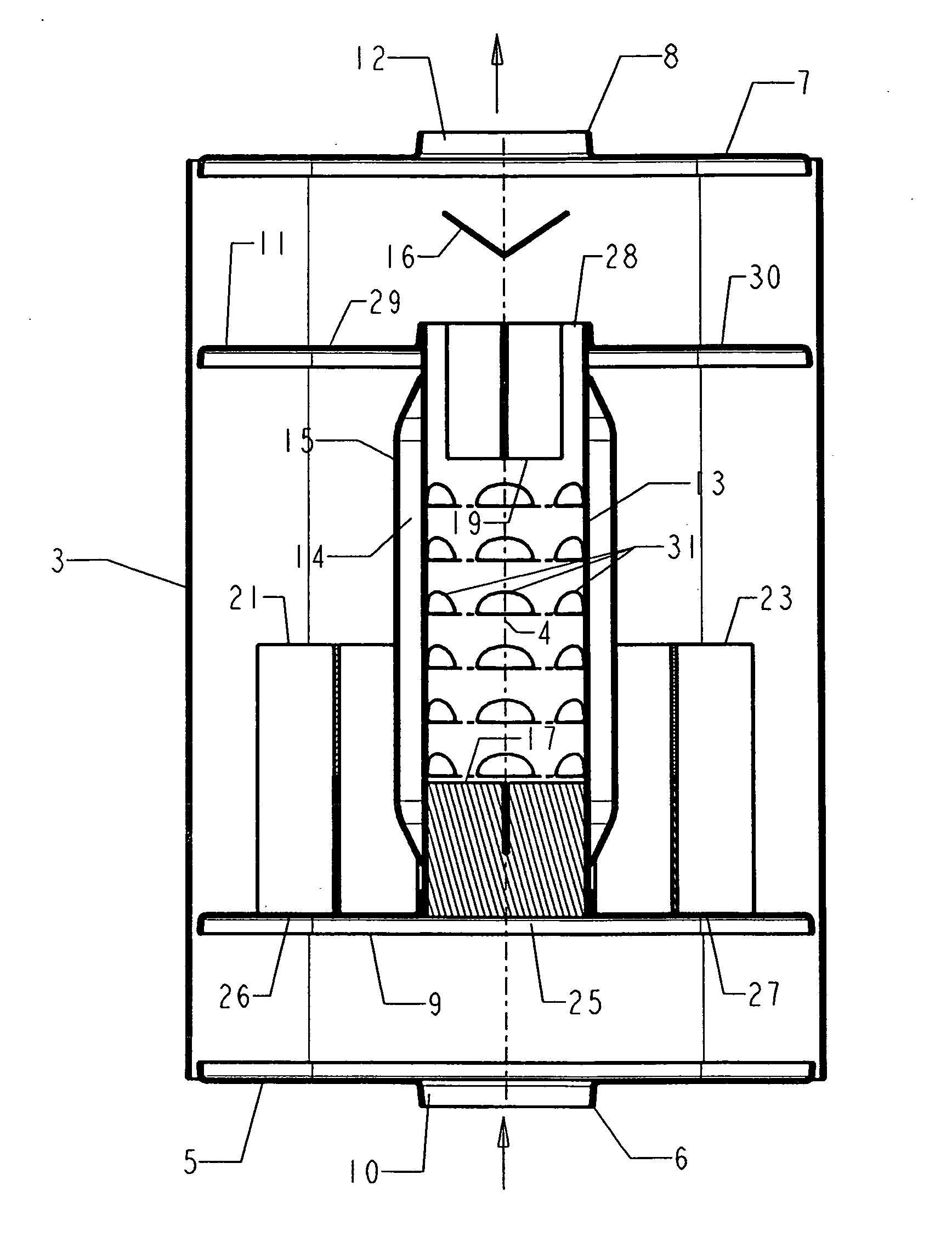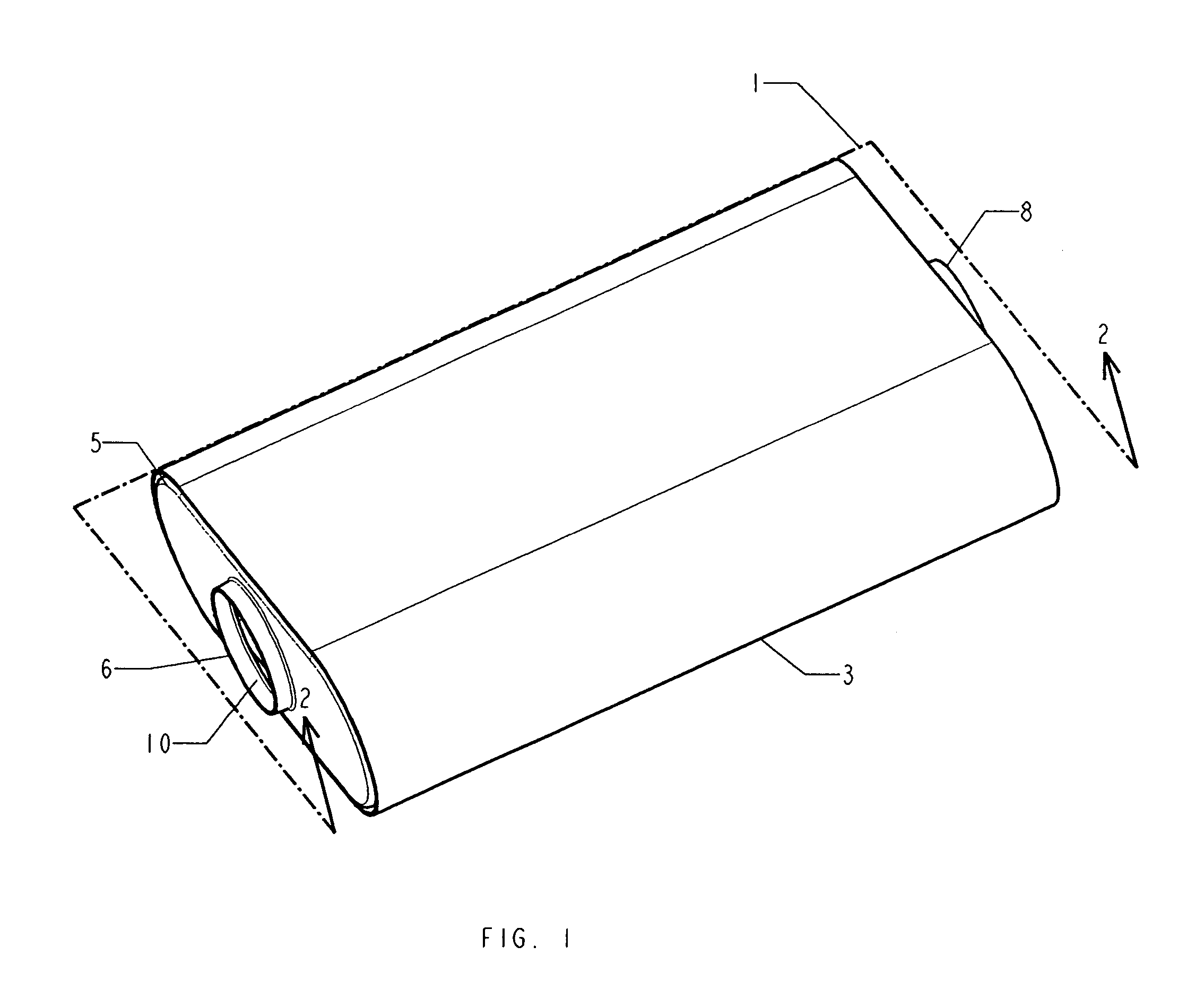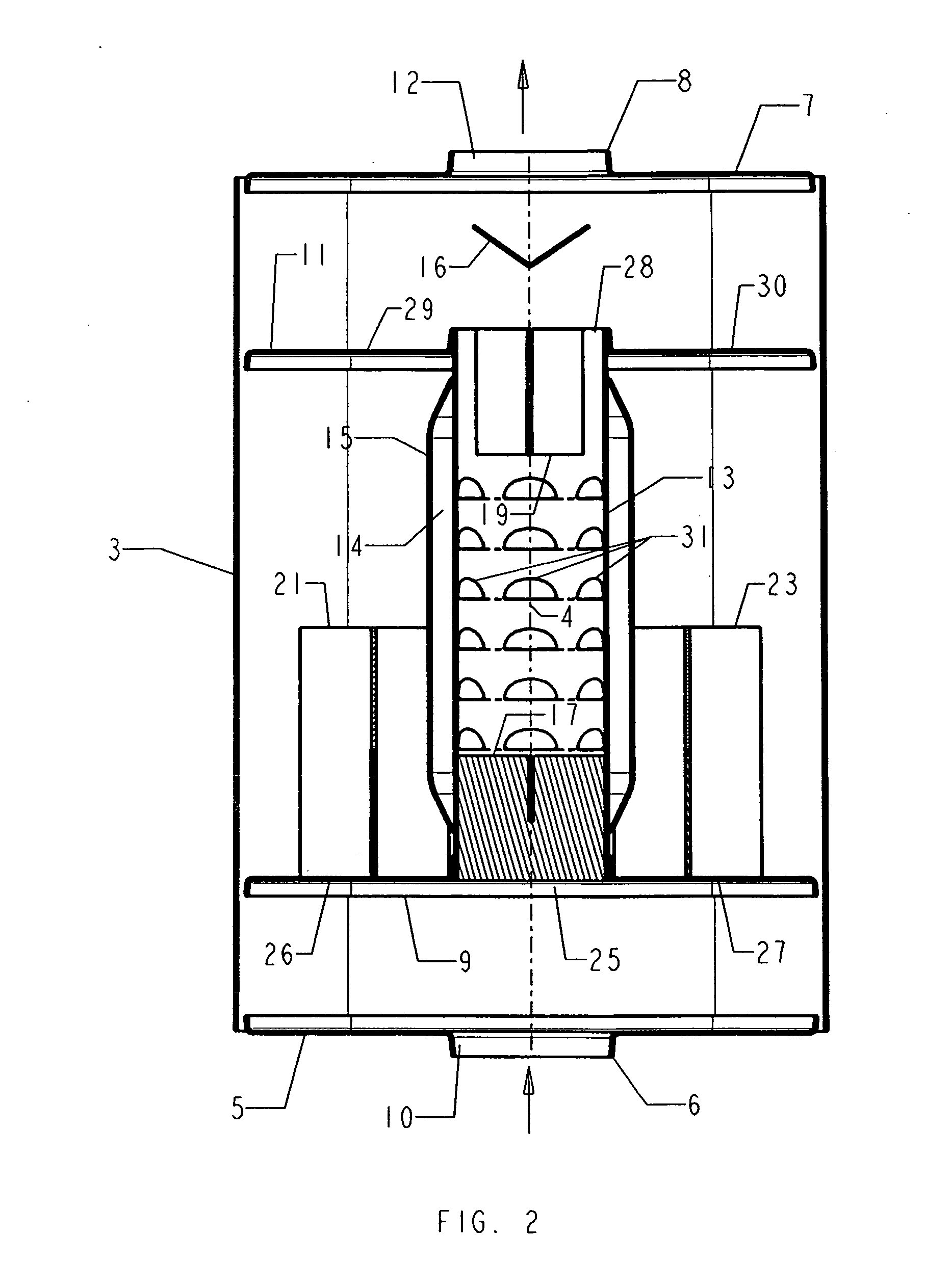Exhaust muffler for internal combustion engines
a technology for exhaust mufflers and internal combustion engines, which is applied in the direction of exhaust treatment, gas passages, gas chambers, etc., can solve the problems of excessive loud and irritating roar, unmuffling operation, and inability to be muffled, so as to improve thermal stability and operational reliability.
- Summary
- Abstract
- Description
- Claims
- Application Information
AI Technical Summary
Benefits of technology
Problems solved by technology
Method used
Image
Examples
first embodiment
[0059] The exploded view of FIG. 10 to which reference is made provides a better view of the various elements of the embodiment of FIG. 9. A first compartment wall 45 at the inlet end of the muffler is spaced behind circular wall 37 at the front or inlet end of the muffler, and a second compartment wall 47 is located at the outlet end of the muffler spaced in front of circular end wall 41 at the exhaust or outlet end of the muffler. Both compartment walls are circular. Central passage 46 is of a much larger diameter than the diameter of passages 26′ and 27′. Compartment wall 45 contains two circular side passages, 26′ and 27′, better illustrated in FIG. 9, spaced on opposite sides of a central passage 46, but only one of those two circular side passages is visible in FIG. 10. Compartment wall 47 likewise includes two circular passages 29′ and 30′, also better illustrated in FIG. 9, spaced on opposite sides of central passage 48 in the wall, but only one of those side passages 29′ is...
second embodiment
[0064] In a practical embodiment of this second embodiment of the invention the muffler was a 8.621 diameter cylinder and of a length of 20 inches. Compartment wall 45 was 8.5 inches in diameter and was formed in 16 gage aluminized steel sheet, central passage 46 was 4.0 inches in diameter and side passages 26′ and 27′ were 1.5 inches in diameter; and those passages were spaced apart by 6 inches center-to-center with each side passage located 3.0 inches from the central passage measured center-to-center. The rear surface of the wall contained a lip of 0.37 inch height surrounding the central opening. The inlet passage 39 in front wall 37 and outlet passage 43 in rear wall 41 were each 4.0 inches in diameter and those walls were 8.5 inches in diameter. The panels forming the divider baffles 17′, 21′ and 23′ were each 3.875 inches in width and 5.0 inches in length and contained a 2.561 inch slot. The louvered tubular member 13′ was 14 inches in length and of a diameter large enough to...
PUM
 Login to View More
Login to View More Abstract
Description
Claims
Application Information
 Login to View More
Login to View More - R&D Engineer
- R&D Manager
- IP Professional
- Industry Leading Data Capabilities
- Powerful AI technology
- Patent DNA Extraction
Browse by: Latest US Patents, China's latest patents, Technical Efficacy Thesaurus, Application Domain, Technology Topic, Popular Technical Reports.
© 2024 PatSnap. All rights reserved.Legal|Privacy policy|Modern Slavery Act Transparency Statement|Sitemap|About US| Contact US: help@patsnap.com










